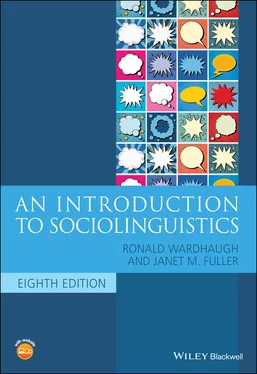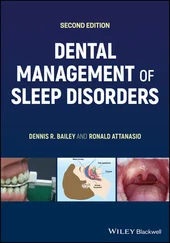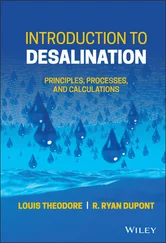The point is not that code‐establishment and naming as such should be frowned upon, but that they limit our understanding of inner‐city social and linguistic practices, and that they have ideological consequences sociolinguists should take into account. As an alternative, I have advocated that ethnolect be regarded as a useful term for speakers’ perceptions of particular ways of speaking (and of course, some scholars of ethnolects are already attending to perceptions of this kind), with the understanding that speakers’ perceptions, and the names they develop for them, do not necessarily correspond to systematic linguistic differences (and vice versa).
The following discussion of African American Vernacular English attempts to incorporate these disparate perspectives. In doing so, we seek to describe a fascinating linguistic phenomenon, the development and spread of a linguistic variety that is linked to a particular ethnic or racial group without contributing to essentialistideas about social groups or making simplistic descriptions of languages.
African American Vernacular English
Interest in African American Vernacular English (AAVE) grew in part out of the observation that the speech of many Black residents of the northern United States, in New York City, Philadelphia, Washington, DC, Baltimore, Detroit, and Chicago, resembles the speech of Blacks in southern states in many respects, yet differs from the speech of Whites in their respective regions. To some extent, this similarity is the result of the relatively recent migrations of Blacks out of the south, but it is also a reflection of long‐standing patterns of racial segregation. Linguists have referred to this variety of speech as Black English , Black Vernacular English , and African or Afro‐American English . Today, probably the most‐used term is African American Vernacular English , and we will use this term (abbreviated as AAVE), although in our discussions of research by particular authors we will use whatever term they used. (The term Ebonics – a blend of Ebony and phonics – has also recently achieved a certain currency in popular speech, but it is not a term we will use in discussion of sociolinguistic research.) It should be also noted that variation in AAVE according to region (e.g., Hinton and Pollock 2000; Jones 2015; Wolfram and Thomas 2008), age (e.g., Rickford 1999; Wolfram and Thomas 2002), and social class (e.g., Britt and Weldon 2015; Linnes 1998; Weldon 2004; Wolfram 2007) has also been studied and that these social variables form an essential aspect of ongoing research. Indeed, the The Oxford Handbook of African American Language (Lanehart 2015, listed in Further Reading below) presents research that addresses variation within AAVE as well as the social factors, functions, and consequences of this variation.
The features of AAVE which have been researched include phonological, morphological, and syntactic characteristics (see also chapter 5on variationist studies for discussions of research on this topic). We will focus here primarily on features which have been found to be specific to AAVE and which have been researched extensively over several decades. This is not, we stress, an exhaustive list of features nor an in‐depth coverage of the research on their variation (please see the references in the Further Reading section to find more research on this topic). The aim of this section is to make our readers aware of some of the structural characteristics of this dialect.
On the phonological level, consonant cluster reduction has often been noted (e.g., from Labov 1972 to Wolfram and Thomas 2008); words such as test , desk , and end may be pronounced without their final consonants. Other phonological features commonly found in varieties of AAVE include r‐lessness and /ai/ monophthongization, and realization of ‘th’ sounds as /t/, /d/, /f/, /v/ or /s/ (Thomas 2007), although these features are found in other varieties of English in North America and around the world.
Some of the most salient and frequently researched features of AAVE have to do with verbal ‐s marking. This involves the presence or absence of the suffix ‐s on finite verbs. In Standard English dialects, ‐s marking is only on third‐person singular verbs (e.g., She likes cheese ). In AAVE, this marking is sometimes absent (e.g., She like school ) and this is considered one of the core features of AAVE. Further, verbal ‐s marking also appears in grammatical contexts other than third‐person singular (e.g., The men has wives ) in some varieties of AAVE. There is extensive literature on patterns of ‐s marking on verbs (Cukor‐Avila 1997; Montgomery et al. 1993; Montgomery and Fuller 1996; Poplack and Tagliamonte 1989, 1991, 2005; Rupp and Britain 2019) showing similarities to other nonstandardized English dialects.
Another interesting pattern in the verbal system of AAVE is the use of the zero copula. As Labov (1969) has explained, the rule for its use is really quite simple. If you can contract be in Standard English, you can delete it in AAVE. That is, since ‘He is nice’ can be contracted to ‘He’s nice’ in Standard English, it can become ‘He nice’ in AAVE. However, ‘I don’t know where he is’ cannot be contracted to ‘I don’t know where he’s’ in Standard English. Consequently, it cannot become ‘I don’t know where he’ in AAVE. We should note that the zero copula is very rarely found in other dialects of English. It is also not categorical in AAVE; that is, there is variation between realization of copula forms and zero copula. Labov (1972) argued for the use of zero copula as a marker of group membership among certain Black youths in Harlem, members of a gang called the Jets. Zero copula use diminished as strength of group membership decreased. There is a wealth of literature on the linguistic factors in copula variation in AAVE (see, for example, Blake 1997; Hazen 2002; Rickford et al. 1991; Weldon 2003).
Still another feature of AAVE has been called habitual be(also called invariant be , or be 2). This feature has become a stereotype of Black speech, often imitated in caricatures of AAVE speakers; for example, the US toy store ‘Toys “R” Us’ has been jokingly called ‘We Be Toys’ in Harlem, a predominantly African American neighborhood of New York City (see the link to a discussion of this joke in the web links provided in the online materials for this textbook). The feature is called ‘invariant’ be because the copula is not conjugated but used in the form of be for all subjects (i.e., I be , you be , he/she/it be , etc.). It is called ‘habitual’ because it marks an action which is done repeatedly, that is, habitually. Thus the utterance They be throwing the ball does not mean that the people in question are (necessarily) currently throwing a ball, but that they often get together and throw a ball back and forth. This differs in meaning from They (are) throwing the ball , which indicates something that is happening at the current time. Research on this feature often focuses on its development, which leads us to another important aspect of research on this dialect as a whole: how did it develop, and how does it continue to change?
Sociolinguists have disagreed on how AAVE relates to other varieties of English in the United States. Kurath (1949, 6) and McDavid (1965, 258) argued that AAVE had no characteristics that were not found in other varieties of English, particularly nonstandardized varieties spoken by Americans of any color in the south. This is sometimes called the Anglicist hypothesisof origin. In this view, AAVE is just another dialect of American English (see Wolfram and Schilling‐Estes 2005 for more discussion).
Читать дальше




![Andrew Radford - Linguistics An Introduction [Second Edition]](/books/397851/andrew-radford-linguistics-an-introduction-second-thumb.webp)







